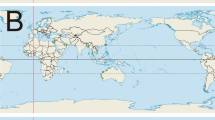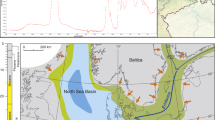Abstract
AMONG the interesting materials obtained this year in the Miocene shales of Florissant, Colorado, is a large “biting” fly, with a remarkably long and strong proboscis, very well preserved. A very superficial examination was sufficient to show that it was no ordinary Tabanid or Muscid, and it at once occurred to me that it was a tsetse-fly. Having no specimen of the latter at hand, I turned to the admirable coloured figures in the second report of the Wellcome Laboratories at Khartoum, and, as was expected, it matched so nearly that it might well go in Glossina. There is a slight difference in the venation which may or may not be of generic value, but if the insect is not a Glossina it is at least closely allied. Curiously, it is not new, for it appears to be the species described by Scudder in 1892 as Paloestrus oligocenus, a supposed new genus of stridæ. The new specimen, practically complete, and with the mouth-parts, shows that it has nothing to do with stridæ, and anyone who will refer to Scudder's figure will see how closely the venation resembles that of Glossina.
This is a preview of subscription content, access via your institution
Access options
Subscribe to this journal
Receive 51 print issues and online access
$199.00 per year
only $3.90 per issue
Buy this article
- Purchase on SpringerLink
- Instant access to full article PDF
Prices may be subject to local taxes which are calculated during checkout
Similar content being viewed by others
Author information
Authors and Affiliations
Rights and permissions
About this article
Cite this article
COCKERELL, T. A Fossil Tsetse-fly in Colorado. Nature 76, 414 (1907). https://doi.org/10.1038/076414b0
Issue date:
DOI: https://doi.org/10.1038/076414b0



